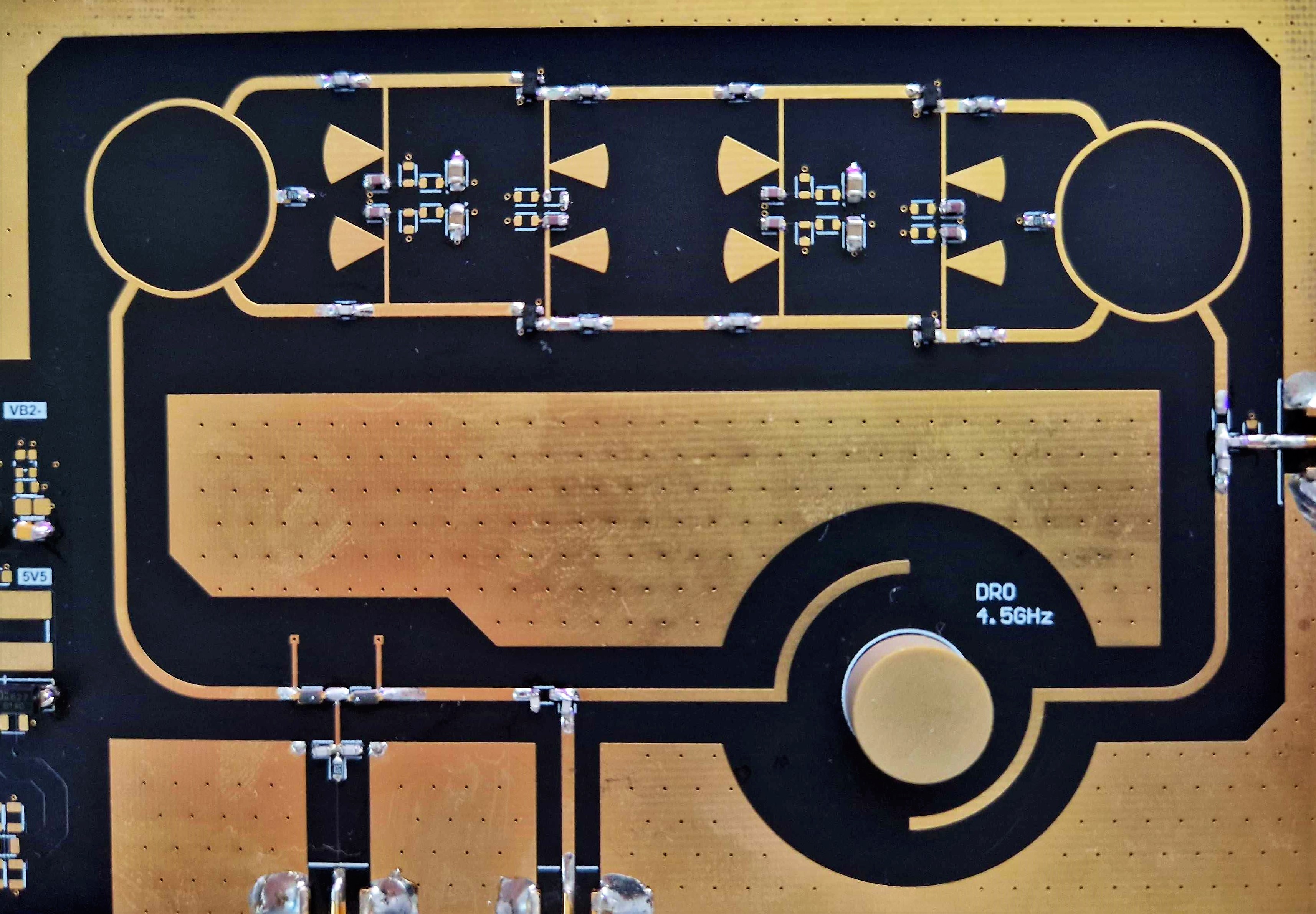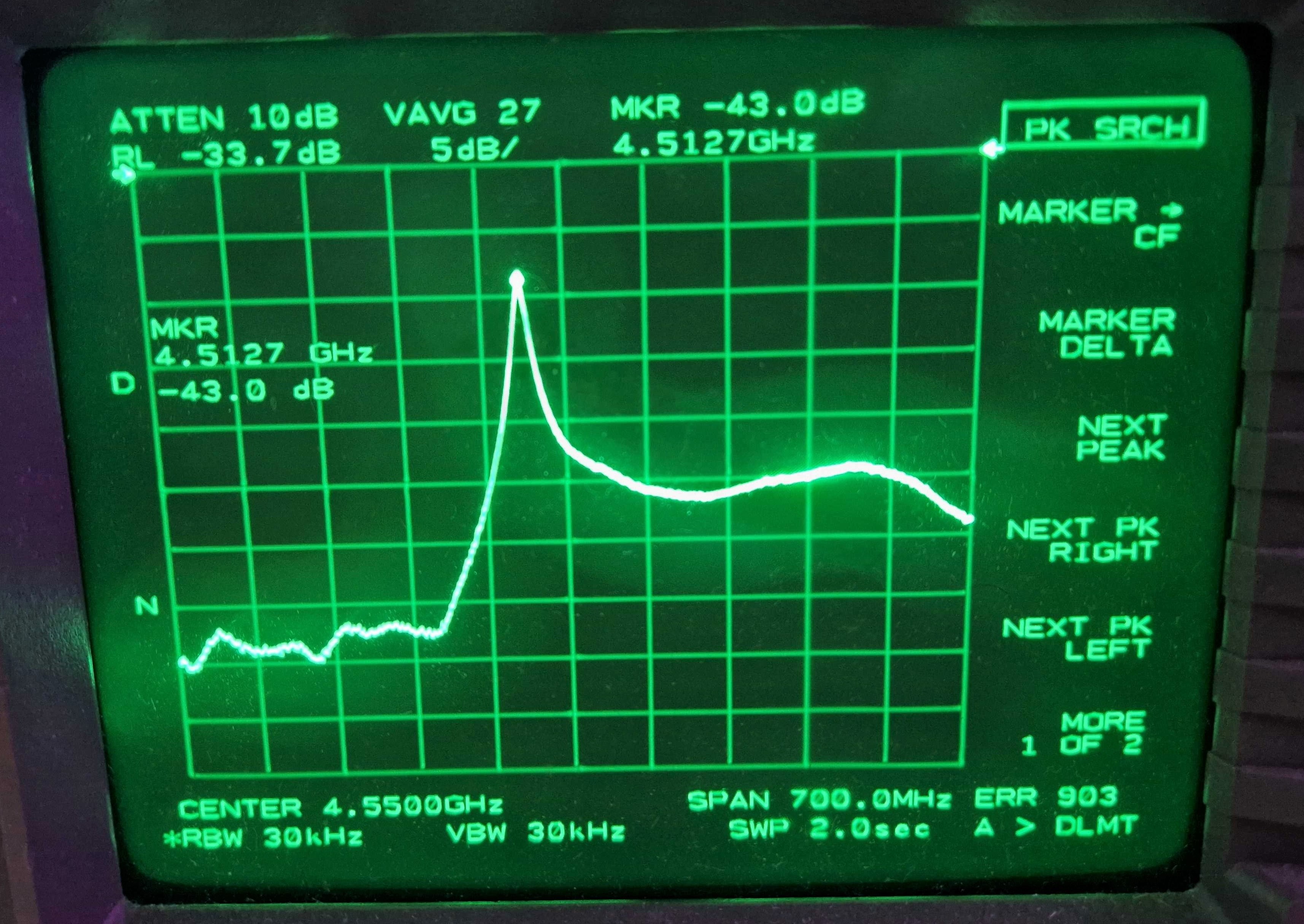Dielectric Resonator Oscillator (DRO)
Circuit Design & Schematic
The working principle of the oscillator is based on the amplification of noise that is sharply bandpass filtered by a resonator. Here, the resonator is realized by a dielectric puck, which is weakly coupled to two open transmission lines. At the resonace of the TM mode inside the dielectric puck, noise can pass through the DRO and be amplified. If the gain of feedback loop is greater than the insertion loss through the resonator, a continuous oscillation will occur. The phase noise of the oscillating signal is shaped by the transfer function through the dielectric resonator. To tweak the resonace frequency of the oscillator and to be able to lock to an external reference signal, an analog phase shifter can be inserted in the feedback loop. Here, the analog phase shifter is realized by a circuit with two varicap diodes (Macom MA46H070), see schematic below.
Fig. 1. - Schematic of the dielectric resonator oscillator.
Board Layout & Manufacturing
The oscillator circuit is deployed on a 0.5 mm thick 2-layer PCB with a Rogers RO4350 subtrate. The microwave signals are guided through 50 Ω-microstrip lines and coupled to a dielectric puck with permitivitty ε and diameter D=1.4 cm. Two additional SMA ports allow for measuring the transmission through the dielectric resonator directly.
Fig. 2. - Layout of the dielectric resonator oscillator.
Fig. 3. - Picture of the dielectric resonator oscillator with the balanced amplifier (top), dielectric resonator (bottom right), and the analog phase shifter (bottom left).
Measurements
We start by measuring the transfer function through the DRO. For this purpose, we use an HP8561 spectrum analyzer with a tracking generator. We observe a distinct resonance around 4.5 GHz, which agrees well with a simple calculation of the resonance frequency for the TM mode, where f with c being the speed of light and 3.832 the first zero of the Bessel function.
Fig. 4. - Direct measurement of the transfer function through the dielectric puck around the resonance frequency of the TM mode.

